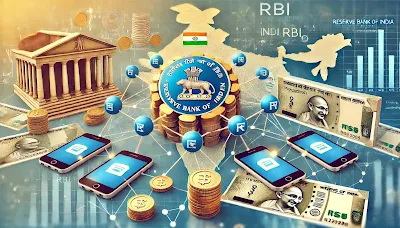P2P Lending in India rbi : Understanding RBI Guidelines and Its Growing Impact
The financial landscape in India is changing, and one of the most exciting developments is the rise of P2P (peer-to-peer) lending. This innovative model allows borrowers and lenders to connect directly, bypassing traditional banks. While it offers unique opportunities, the Reserve Bank of India (RBI) has introduced regulations to ensure the system remains safe and transparent.
Let’s explore what P2P lending is, why it’s gaining popularity, and how RBI’s guidelines are influencing its future in India.
What is P2P Lending?
P2P lending is a straightforward yet revolutionary concept. It’s a platform where individuals in need of loans can connect directly with those willing to lend money. Think of it as borrowing from a friend but on a larger scale, with the assurance of an organized platform overseeing the process.
Borrowers gain quick access to funds, often at lower interest rates than those offered by banks. Meanwhile, lenders can enjoy better returns compared to traditional investments like fixed deposits or savings accounts.
Why is P2P Lending Booming in India?
India has experienced a rapid digital transformation over the past decade. From e-wallets to online shopping, people are increasingly comfortable managing their finances digitally. This has created a favorable environment for P2P lending platforms to flourish.
Here’s why P2P lending is becoming popular:
1. Financial Access: Many small businesses and individuals who struggle to secure bank loans now have an alternative.
2. Higher Returns: Lenders can earn significantly better returns compared to traditional investment options.
3. Speed and Convenience: Borrowers can access funds quickly, and lenders can invest with just a few clicks.
4. Personalized Options: Borrowers and lenders can negotiate terms that fit their needs, such as loan duration and interest
What Are RBI’s Rules for P2P Lending?
The growth of P2P lending has raised concerns regarding safety and transparency. In response, the RBI has established detailed guidelines to regulate the sector. Here’s what you should know:
1. Platforms Must Register
All P2P platforms operating in India are required to register with the RBI as an NBFC-P2P (Non-Banking Financial Company – Peer-to-Peer Lending). This registration ensures compliance with strict standards.
2. Limits on Borrowing and Lending
Lenders can invest up to ₹50 lakh across all platforms, provided they present a net-worth certificate.
Borrowers are allowed to take out a maximum loan of ₹10 lakh through P2P platforms.
3. Use of Escrow Accounts
All transactions between borrowers and lenders are processed through escrow accounts overseen by independent trustees. This arrangement ensures secure handling of funds.
4. Assessment
Platforms must perform credit checks and evaluate the risk profiles of borrowers. They are also required to report loan information to credit bureaus, enhancing transparency.
5. No Cross-Border Lending
To maintain simplicity and security, P2P lending is restricted to Indian residents only.
What Does This Mean for You?
For Borrowers
If you’re in need of funds but prefer to avoid the complexities of a bank loan, P2P lending can be a great alternative. However, it’s crucial to borrow wisely and fully understand the repayment conditions.
For Lenders
If you’re seeking better returns on your investments, P2P lending presents a promising opportunity. Just be sure to spread your investments across various borrowers to mitigate risks.
Top P2P Lending Platforms in India
If you’re thinking about entering the P2P lending space, here are some of the top RBI-registered platforms to consider:
1. Faircent – Renowned for its user-friendly interface and diverse options.
2. LenDenClub – Provides excellent returns and transparent processes.
3. Finzy – Emphasizes quick and secure funding.
4. i2iFunding – Offers advanced tools for effective risk management.
5.RupeeCircle – Perfect for small-ticket loans.
Is pear to pear Lending the Future of Finance in India?
The emergence of P2P lending marks a significant change in how people in India view borrowing and investing. It’s making finance more inclusive, providing access to credit for those in need while offering better returns for those who lend.
financial decision, it’s important to do your research. Opt for RBI-approved platforms, be aware of the risks, and make sure you’re making well-informed choices.
P2P lending is not just a passing trend—it represents a look into the future of finance in India. So, whether you’re a borrower in sea
rch of assistance or a lender looking for better returns, this sector has plenty to offer.








0 Comments